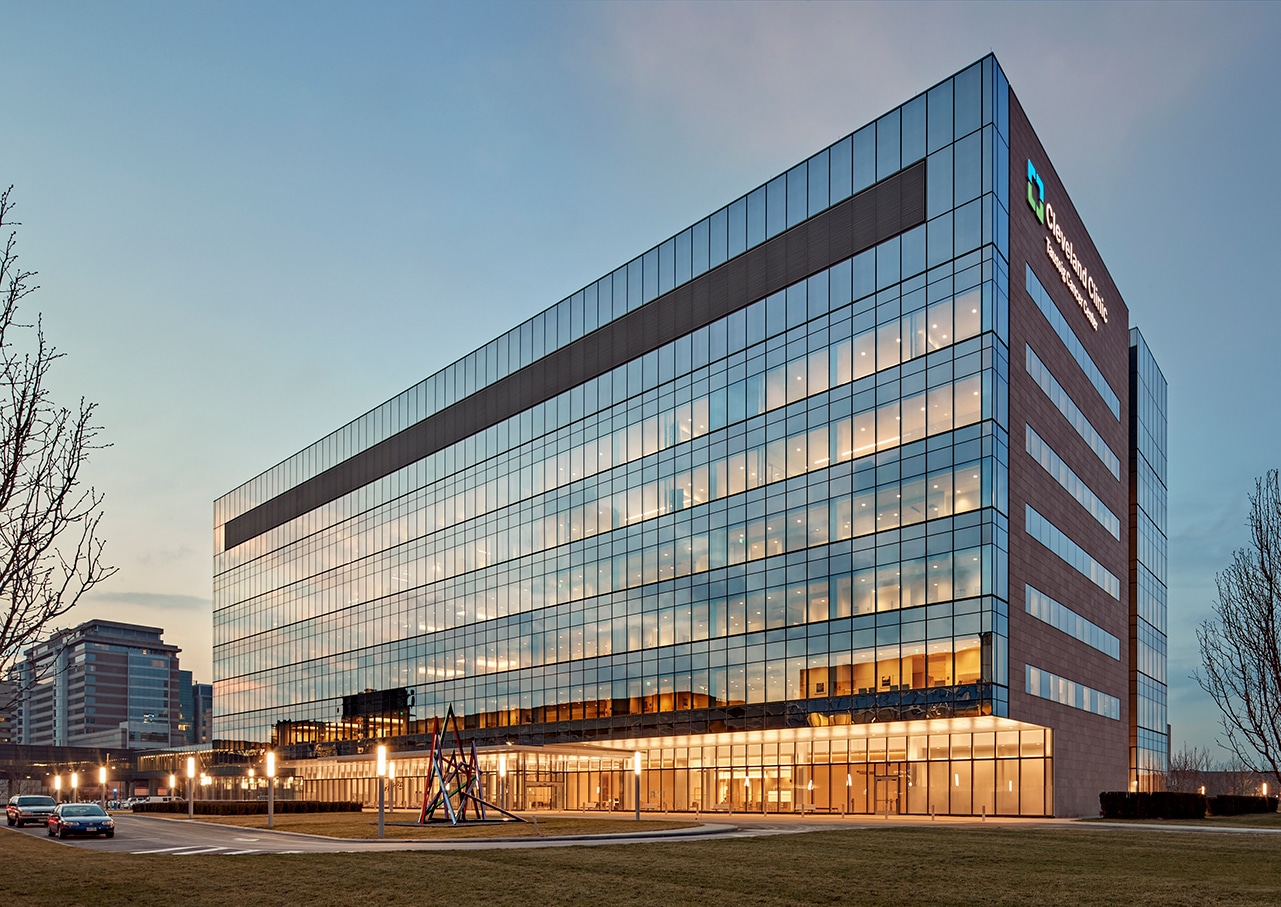Story at a glance:
- Major medical centers and manufacturers in health care fuse architecture and design to create healing spaces.
- The Taussig Cancer Institute at Cleveland Clinic was completed in 2016, pursuing LEED with plentiful natural light and a green courtyard.
- Cleveland Clinic created the chief design officer position in 2017 to ensure consistency in design and experience across the clinic’s 10 hospitals, 150 regional outpatient centers, and global locations.
Patient healing requires more than medicine. That’s why designers at the Cleveland Clinic take a holistic approach to creating spaces—emphasizing everything from medical function and caregiver well-being to the overarching patient experience with patient-centric design.
The 377,000-square-foot Taussig Cancer Institute, completed in late 2016 as part of the clinic’s master plan and currently pursuing LEED, is a prime example of the clinic’s approach to aesthetics.
Floor-to-ceiling windows allow natural light to flood into treatment rooms while patients get a view of the green courtyard outside. High ceilings and skylights illuminate lower levels, and airy open corridors make travel from one area to another smooth. An open lobby with clean lines, simple furniture, white and wooden-clad walls, and striking geometric art greets patients.
“Nothing is physically daunting about coming into the space,” says Chris Connell, chief design officer at Cleveland Clinic’s Center for Design. “It doesn’t have to be extravagant architecture. These are very basic architecture principles that are very near and dear to our hearts but have a big impact.”
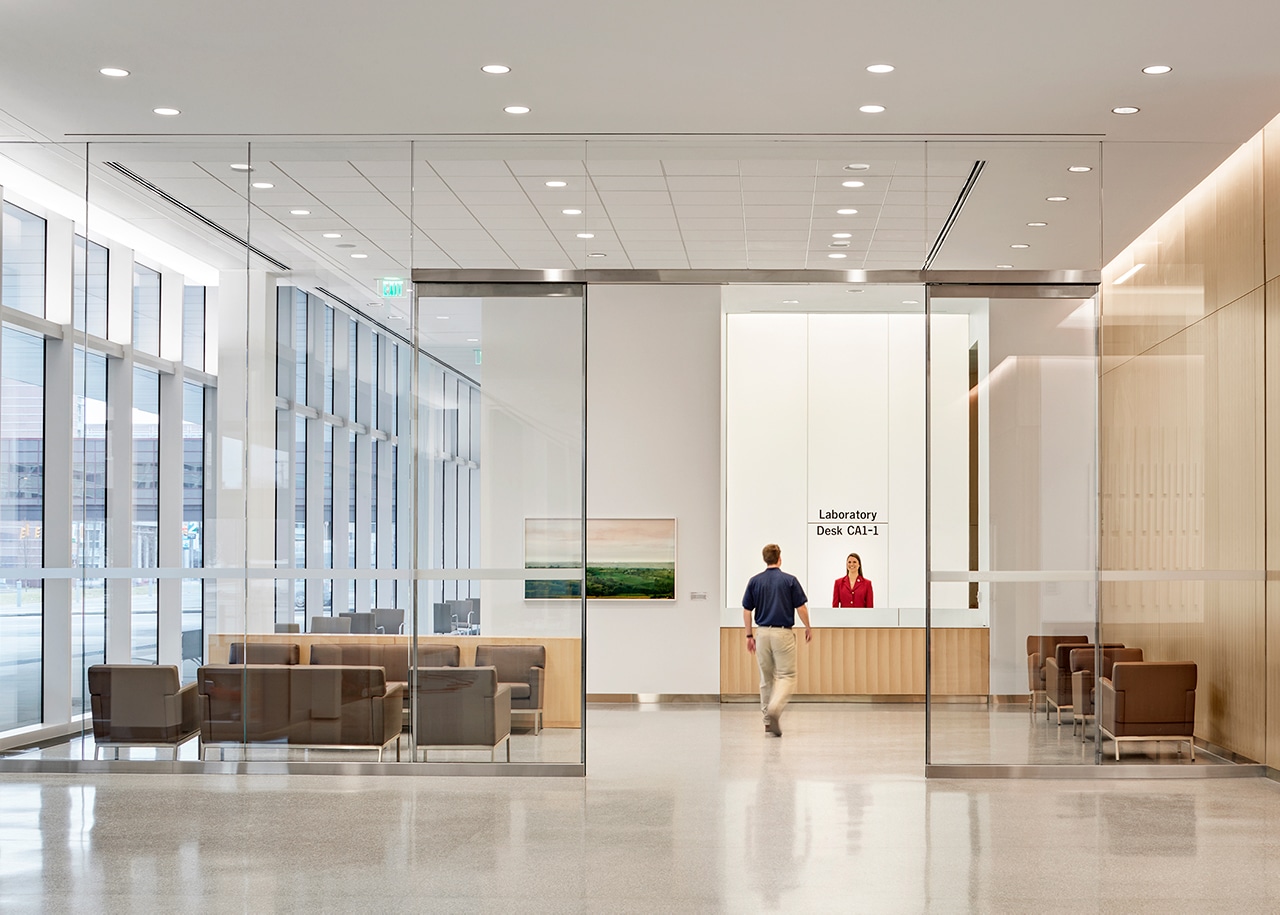
Inside the Cleveland Clinic. Photo by Robert Benson Photography
Spaces at the new Cleveland Clinic building are designed to facilitate a positive experience, and plentiful studies have proven that elements like natural light can lift patients’ spirits. “When you go into a dark space, your thoughts are solely on the problem you are there to address,” Connell says. Here, rooms that can’t have windows due to their functionality are well-lit with ambient lighting to make the space more relaxing.
Beautiful environments also improve the health and happiness of caregivers, which funnels down to patients. “Part of the cure is about the attitude and feeling of well-being given off by caregivers,” Connell says. “The aura given off by the people who are caring for you is incredibly important to your well-being. Patients want to feel like they are in good hands, that their caregivers are working as a team. There is certainly a correlation between how caregivers feel and how they do their jobs.”
Designers of the clinic’s facilities recognize the connection between healthy buildings and physical health. To date, 13 of Cleveland Clinic’s buildings have been LEED-certified and others are in the works. The clinic’s Center for Functional Medicine Suite was one of the first medical offices to receive the WELL certification, setting a new standard for future clinic buildings. The WELL Building Standard is awarded based on a building’s performance—measuring air, water, light quality, healthy foods, and fitness options for occupants, among other things.
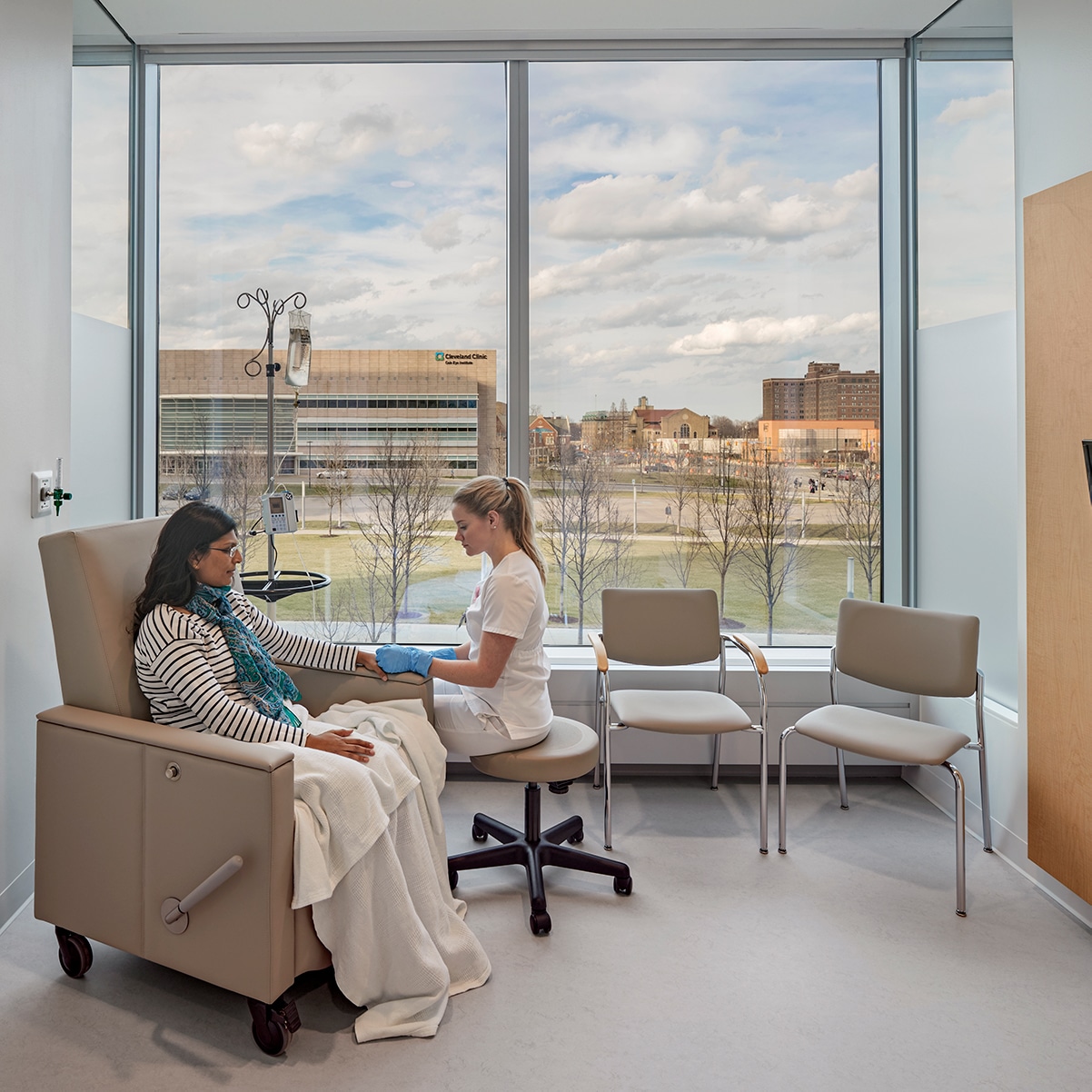
Private rooms and long corridors are flooded with natural light at the Taussig Cancer Center. Photo by Robert Benson Photography
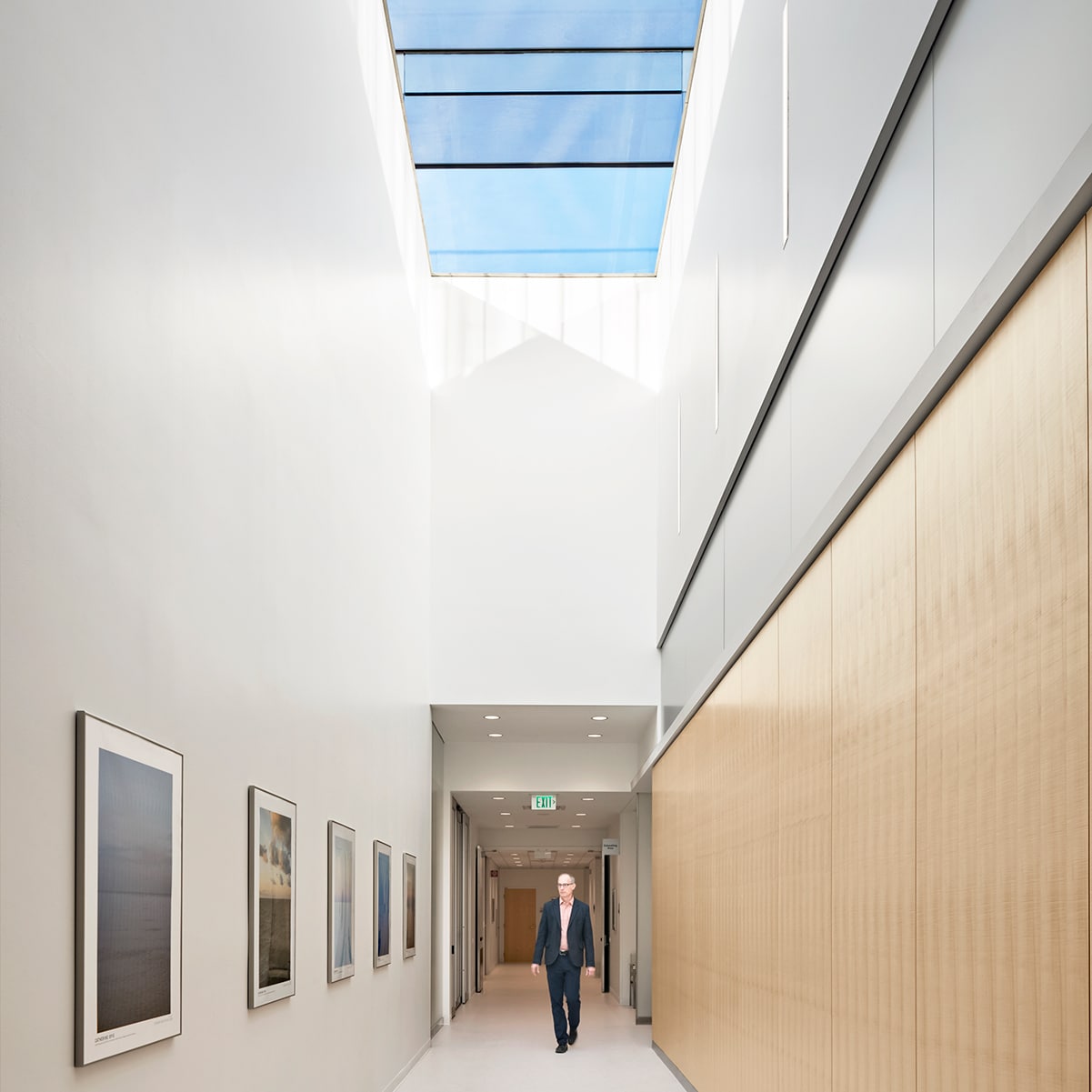
Skylights in long corridors flood even interior spaces with natural light at the Cleveland Clinic. Photo by Robert Benson Photography
Connell notes that while health care environments should feel serene, they should still feel like places to receive care that are designed for wellness.
“Everyone wants to make buildings feel like hotels these days,” he says. “I don’t necessarily agree with that. They need to take out some of the anxiety for patients but should also feel like places where they receive the very best treatment. They need to be clean, proficient, organized.” That said, the cancer center also offers massage, reflexology, art, and music therapies for patients.
But health care spaces have to be functional, and they need to be easy to navigate.
“You mustn’t get in the way of technical requirements and what is needed for caregivers to do the very best job,” Connell says. “Each space needs to be as simple, calm, and timeless as possible.” That means not getting lost in a design spiral where you end up with more in a room than you need. “It can be detrimental to doing a good job. It gets confusing and messy.”
Most big health care systems have new and old buildings and a variety of challenges. Designers have to ensure each space can operate and function as intended—not just look pretty. “Not every facility building needs to be an iconic piece of architecture,” Connell says. “Sometimes there are places for special pieces in the jigsaw puzzle, but the pieces in between are the bits that make it all work and they are all important in different ways. You need to pick out the pieces that are almost like the catalysts of the puzzle while giving equal care to all the pieces.”
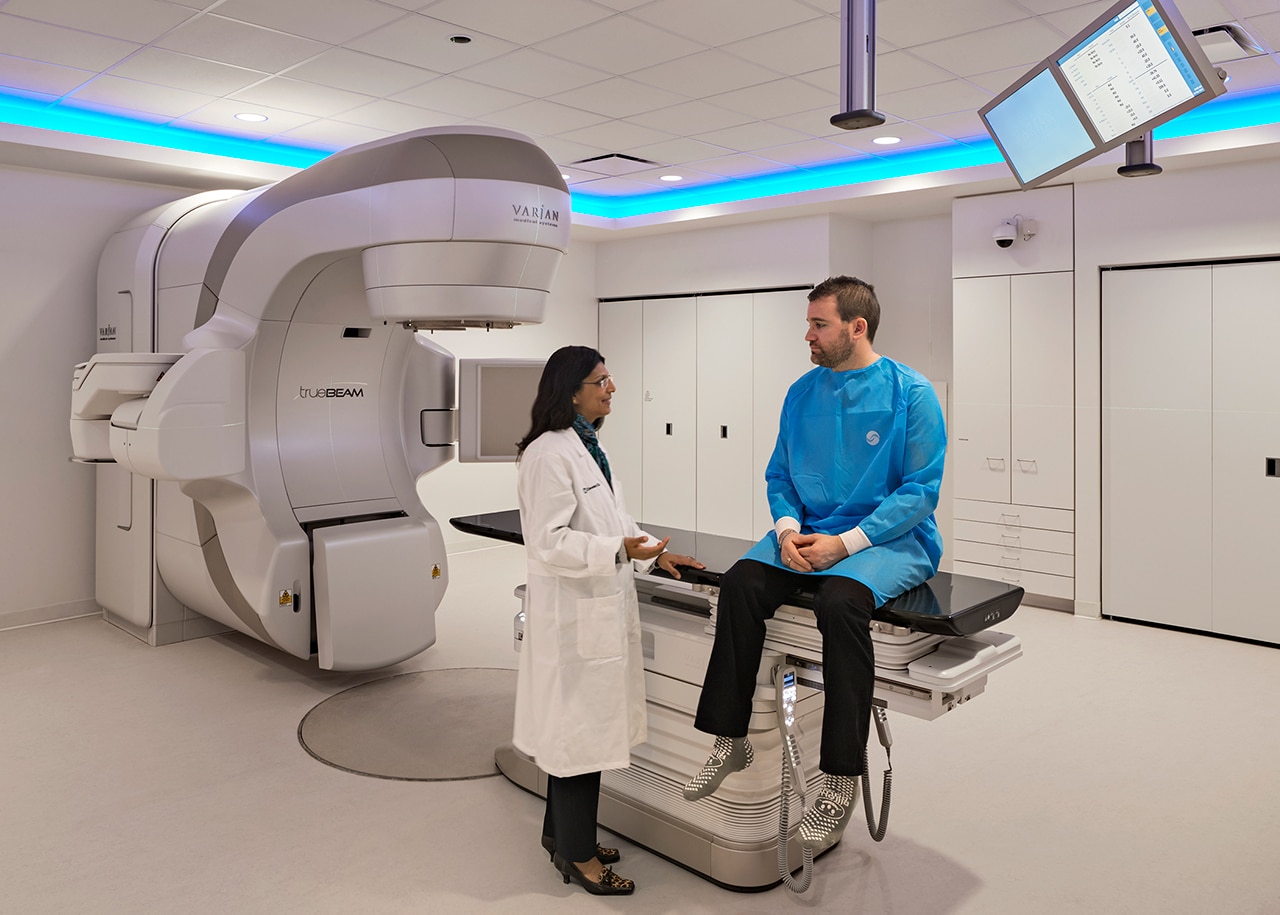
More than a dozen of the Cleveland Clinic’s buildings are LEED-certified. Photo by Robert Benson Photography
Connell, who previously worked externally as a designer on Cleveland Clinic buildings, was appointed to the new position of chief design officer in 2017. The position was created to help ensure consistency in design and experience across the clinic’s 10 hospitals, 150 regional outpatient centers, and global locations.
“We want someone to be able to walk into a Cleveland Clinic anywhere in the world and know they are going to get a certain level of care,” he says. “Aesthetics and design are a big part of that experience.”
Most recently, Connell and his team have been working on the Health Education Campus, scheduled to open in summer 2019. The campus will include a 27,000-square-foot atrium designed to maximize natural light from a specially engineered roof, floor-to-ceiling windows, and shared learning spaces to encourage interaction across disciplines.

